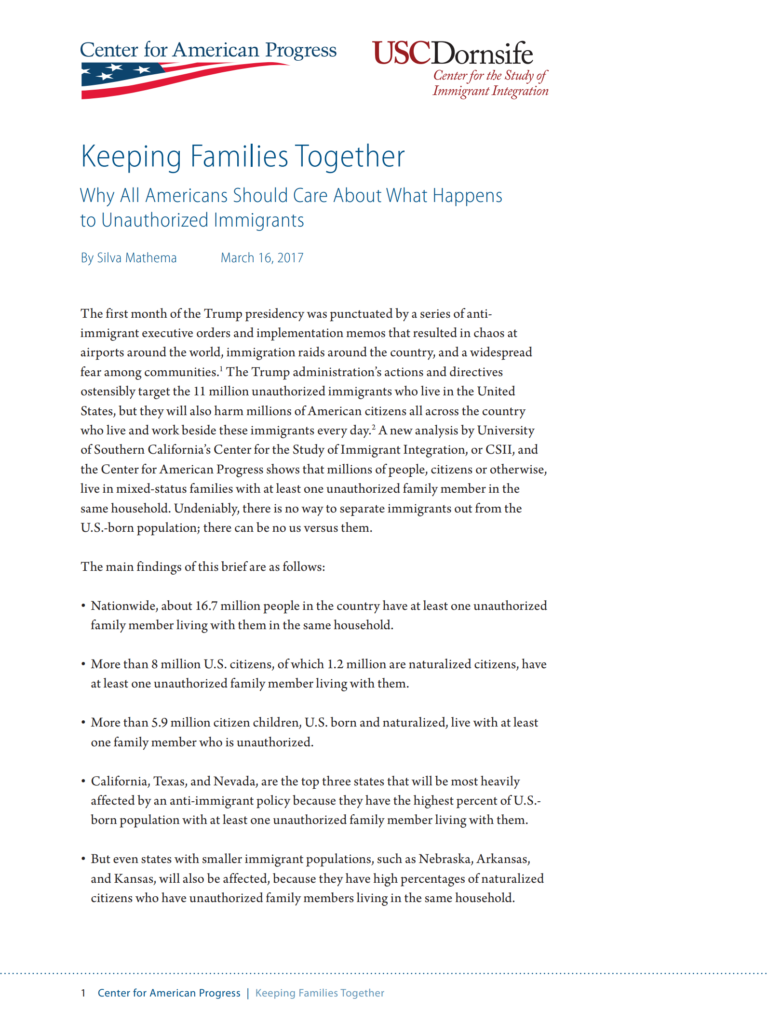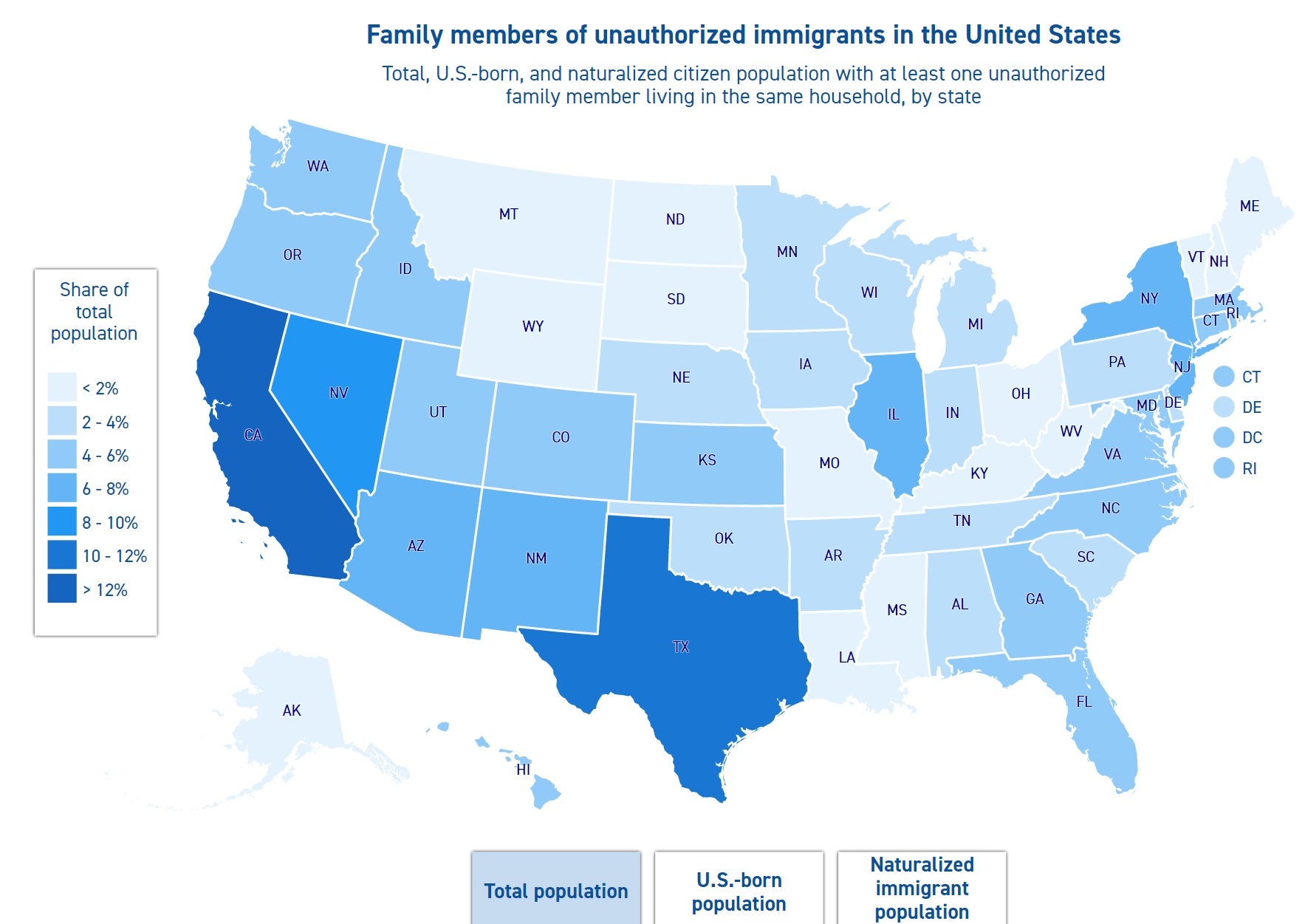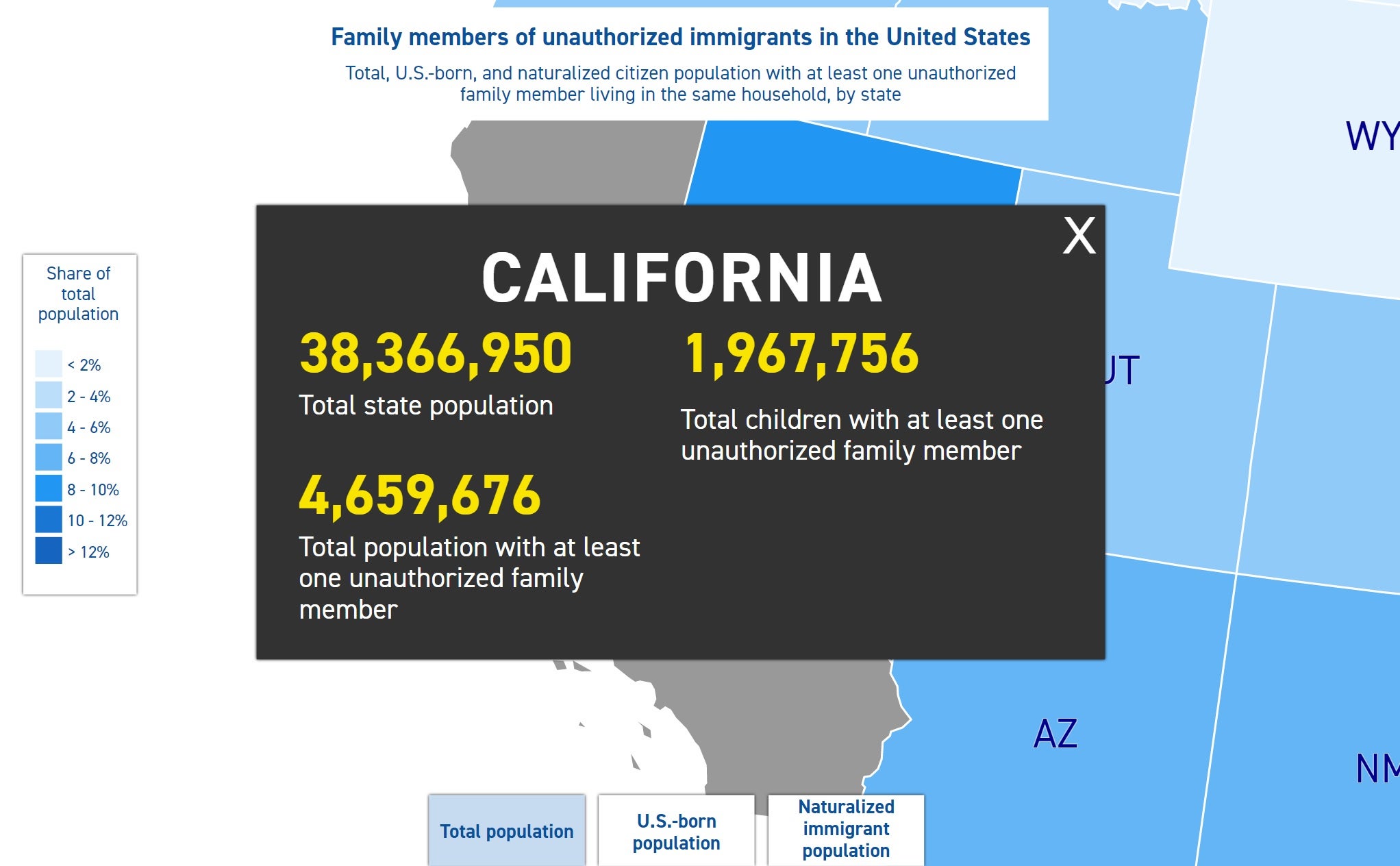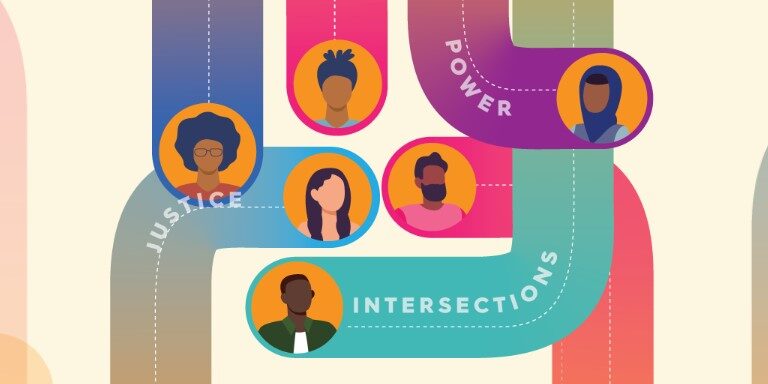
Immigrant Inclusion & Racial Justice
A national and state-by-state look at family members of the 11 million unauthorized immigrants in the U.S.
March 16, 2017
By Silva Matthema, Center for American Progress
Data analysis by Manuel Pastor, Justin Scoggins,and Alejandro Sanchez-Lopez, USC Center for the Study of Immigrant Integration (CSII)
Please note: reports dated earlier than June 2020 were published under our previous names: the USC Program for Environmental and Regional Equity (PERE) or the USC Center for the Study of Immigrant Integration (CSII).
The USC Center for the Study of Immigrant Integration (CSII) and the Center for American Progress (CAP) released a research brief (and interactive data map) that shows millions of people, citizens or otherwise, live with at least one unauthorized family member in the same household.
Key findings include:
- Nationwide, about 16.7 million people in the country have at least one unauthorized family member living with them in the same household.
- More than 8 million U.S. citizens, of which 1.2 million are naturalized citizens, have at least one unauthorized family member living with them.
- More than 5.9 million citizen children, U.S. born and naturalized, live with at least one family member who is unauthorized.
- California, Texas, and Nevada, are the top three states that will be most heavily affected by an anti-immigrant policy because they have both the highest share of total population and highest percent of U.S.-born population with at least one unauthorized family member living with them.
- But even states with smaller immigrant populations, such as Nebraska, Arkansas, and Kansas, will also be affected, because they have high percentages of naturalized citizens who have unauthorized family members living in the same household.





